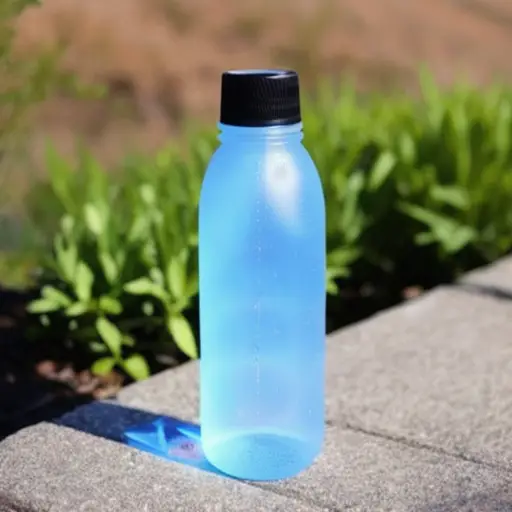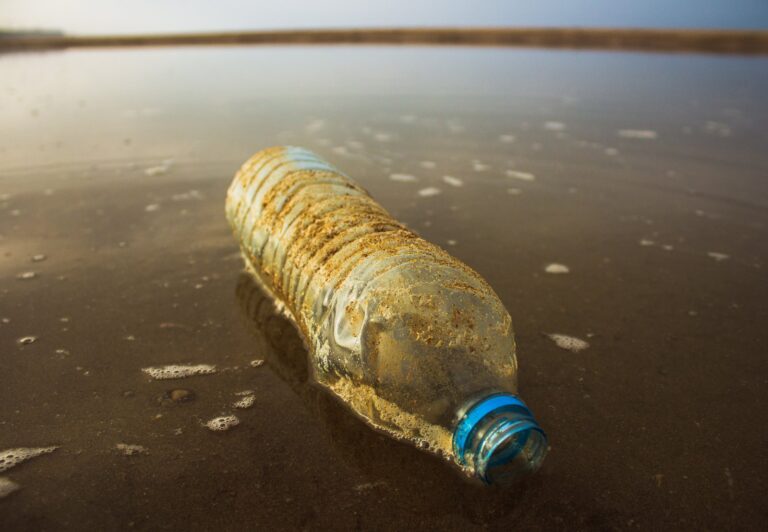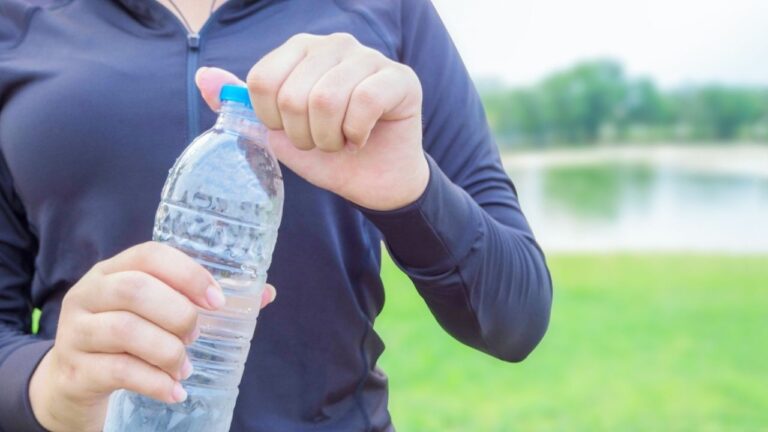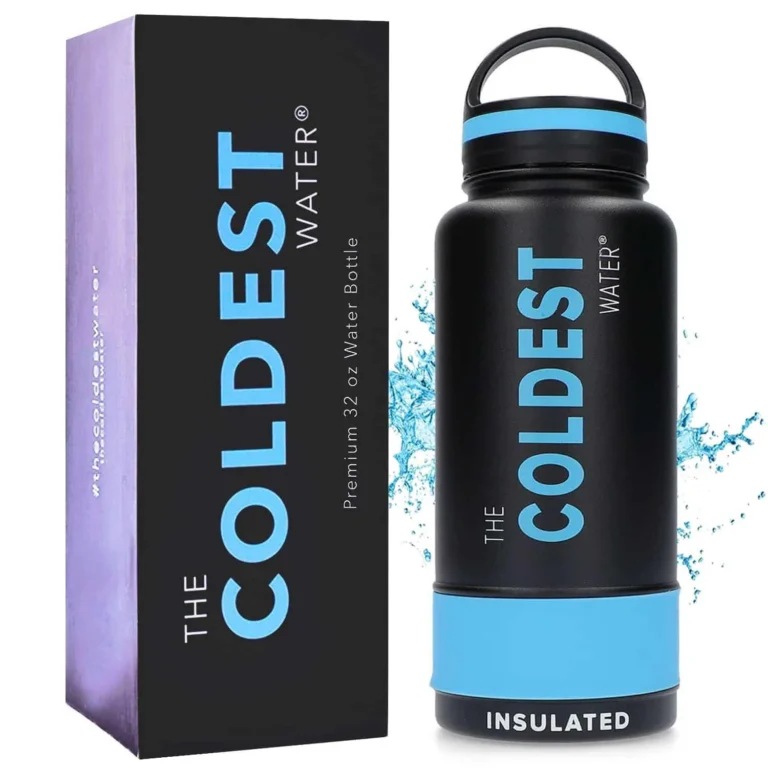Have you ever wondered how long you can reuse a plastic water bottle before it’s time to toss it out? With the push for eco-friendly and sustainable living, it’s essential that we all take a closer look at our habits, especially when it comes to plastic usage. The durability and convenience of plastic water bottles make them a popular choice for many, but at what cost? In this blog post, we’ll dive into the lifespan of plastic water bottles, the risks they pose, and ways to make smarter choices to live more sustainably. Are you ready to rethink your plastic usage? Let’s get started!
I. Definition of plastic water bottle
A plastic water bottle is a container made from various types of plastic materials that is primarily used to hold and transport water or other beverages. These bottles are typically lightweight and come in various shapes and sizes to accommodate different needs and preferences. Plastic water bottles often have a narrow opening at the top with a screw-on or flip-top lid for easy drinking and spill prevention. They are a convenient and portable option for staying hydrated while on the go, whether it’s during workouts, outdoor activities, or everyday use. Plastic water bottles are commonly available in stores and can be purchased individually or in packs. They are designed for single-use purposes, but can be reused conservatively if they have not experienced any wear and tear. It’s important to note that reusing plastic water bottles should be done with caution and proper cleaning to minimize the risk of bacterial growth and chemical leaching.
Why plastic water bottles are commonly used
Plastic water bottles have become a ubiquitous part of our daily lives for several reasons. First and foremost, they are incredibly convenient. Whether you’re on-the-go or simply need a quick hydration fix, grabbing a plastic water bottle is the easiest solution. They are lightweight, portable, and readily available in a variety of sizes.
Another reason for their popularity is the perception of cleanliness and safety. Plastic water bottles are typically factory-sealed, providing a sense of reassurance that the contents are uncontaminated. Additionally, the single-use nature of these bottles makes them appealing as they eliminate the need for washing and potential exposure to germs.
Furthermore, plastic water bottles are cost-effective. They are relatively inexpensive, especially when compared to alternatives such as stainless steel or glass bottles. This affordability makes them accessible to a wide range of consumers.
Despite their convenience and popularity, it’s important to consider the environmental impact of plastic water bottles, as well as potential health hazards associated with their reuse. By understanding the facts, individuals can make informed decisions about their water bottle choices and consider more sustainable options.
The environmental impact of plastic water bottles
Plastic water bottles have become a ubiquitous presence in our daily lives, but their environmental impact is cause for concern. The production of these bottles requires the use of fossil fuels and emits greenhouse gases, contributing to the degradation of our environment. What’s more, the majority of plastic water bottles are not recycled, ending up in landfills where they can take hundreds of years to decompose. This adds to the already massive amount of plastic waste polluting our planet. Additionally, chemicals can leach from the plastic into the soil and groundwater, posing a threat to both the environment and our health. Plastic waste that ends up in the ocean can also have devastating effects on marine life. To minimize the environmental impact of plastic water bottles, it’s important to consider alternatives such as reusable stainless steel or glass bottles. These alternatives not only reduce waste but also eliminate the potential for harmful chemicals to be leached into our water. By making conscious choices about the containers we use, we can make a positive impact on the health of our planet.
II. Understanding Plastic
Types of plastic commonly used in water bottles
Plastic water bottles are commonly made from three types of plastic: polyethylene terephthalate (PET or PETE), high-density polyethylene (HDPE), and plastics labeled with the recycling code #7. PET is a commonly used lightweight plastic, found in bottles used for water, sauces, and other food packaging. HDPE is a sturdier and more durable plastic often used for detergent bottles, soap bottles, and larger liquid containers. Plastic bottles labeled with #7 may contain bisphenol A (BPA), a chemical that can disrupt hormone regulation. While PET bottles are generally considered safe for single and repeated use, it’s important to store them at room temperature and away from excessive heat to minimize the risk of chemical leaching. HDPE bottles can be safely reused if they are washed well and not damaged. However, it’s important to note that most manufacturers recommend only one-time use for plastic bottles due to the potential for bacterial growth. Choosing a reusable stainless-steel or glass bottle may be a better alternative for both convenience and environmental reasons.
Properties of plastic
Plastic is a versatile material that is widely used in the production of water bottles. It offers several properties that make it suitable for this purpose. One of the key properties of plastic is its durability. Plastic bottles can withstand wear and tear, making them capable of long-term use. They are resistant to dents and scratches, which ensures that they can be reused multiple times without losing their shape or functionality. Additionally, plastic is lightweight, making it easy to carry around. This makes plastic water bottles convenient for on-the-go hydration. Another important property of plastic is its ability to be molded into various shapes and sizes. This allows manufacturers to create water bottles in different designs to cater to individual preferences. Plastic is also resistant to corrosion, ensuring that the water inside remains unaffected and safe to drink. Overall, the properties of plastic make it a popular choice for water bottles, providing convenience, durability, and safety for the user.
The durability of plastic
Plastic is widely used in the production of water bottles because of its durability. It is designed to withstand everyday use and wear, making it a reliable choice for holding liquids. Plastic bottles are often made from materials such as polyethylene terephthalate (PET) or high-density polyethylene (HDPE), which are known for their strength and resistance to damage. These properties ensure that plastic bottles can withstand impacts and resist cracking or breaking, even when they are dropped or subject to rough handling. However, it is important to note that plastic bottles are not indestructible, and their durability can be compromised over time. The repeated use of plastic bottles can lead to the development of cracks or scratches, which can provide a breeding ground for bacteria. To maximize the durability of plastic bottles, it is essential to handle them with care and regularly inspect them for any signs of damage. Ultimately, it is wise to consider alternatives such as stainless steel or glass bottles if you are looking for a more durable and sustainable option.
III. The Lifespan of a Plastic Water Bottle
How long can you reuse a plastic water bottle
Plastic water bottles have become a common sight in our daily lives. They are convenient, lightweight, and readily available. But have you ever wondered how long you can actually reuse a plastic water bottle before it becomes unsafe? The answer is not as straightforward as you might think.
According to experts, it is best to reuse plastic water bottles sparingly and wash them thoroughly to minimize the spread of germs. The Federal Drug Administration (FDA) has determined that most plastic water bottles made from polyethylene terephthalate (PET) are safe for both single and repeated use. However, commercial bottled water manufacturers do not recommend reusing their disposable bottles due to potential physical breakdown of the plastic, such as thinning or cracks, which can harbor bacteria and pose a health risk.
To ensure the safety of reusing a plastic water bottle, it is important to wash it regularly with hot soapy water between each use. Once the bottle starts showing signs of wear and tear or cracks, it is time to replace it. Alternatively, you can opt for reusable bottles made of glass or stainless steel, which are easier to clean and do not pose the same risks as plastic bottles.
In conclusion, while plastic water bottles can be reused for a limited time, it is crucial to prioritize proper hygiene and maintenance to avoid bacterial contamination. Consider switching to reusable alternatives for a safer and more environmentally-friendly option.
Factors that affect the lifespan of a bottle
The lifespan of a plastic water bottle can be influenced by several factors. Firstly, the type of plastic used in the bottle plays a significant role. Polycarbonate bottles typically last between 1-2 years, while PET bottles can last 2-3 years. Other factors that affect lifespan include the amount of water the bottle contains and the temperature at which it is stored. Additionally, how well the bottle is cared for can impact its longevity. Regular cleaning and proper storage, away from direct sunlight and extreme temperatures, can help prolong the lifespan of a plastic water bottle. Signs that it may be time to replace a bottle include leaks, cracks, a funny smell or taste, or discoloration. By considering these factors and taking good care of your reusable bottle, you can ensure its longevity and reduce waste in the environment.
When to replace a plastic water bottle
Knowing when to replace a plastic water bottle is important for both your health and the environment. While many plastic water bottles are reusable, there are signs that indicate it’s time for a replacement. Firstly, if the bottle has cracks or visible signs of wear, it’s time to say goodbye. These cracks can harbor bacteria and make cleaning difficult. Secondly, if the bottle has been stored or used in extremely high temperatures, there may be a risk of chemicals leaching into the water. It’s best to dispose of these bottles to avoid any potential health risks. Additionally, if the bottle is labeled with a number 7, it may contain bisphenol A (BPA), which has been linked to hormone disruptions. To stay on the safe side, replacing these bottles is recommended. In general, if you notice any signs of degradation or feel unsure about the safety of the bottle, it’s better to err on the side of caution and replace it. By being mindful of when to replace a plastic water bottle, you can ensure the safety of your drinking water and make more eco-friendly choices.
IV. Risks of Reusing Plastic Water Bottles
Health hazards associated with reusing plastic bottles
When it comes to reusing plastic water bottles, there are some health hazards that you need to be aware of. Chemical leaching is a major concern, especially when the plastic bottles are structurally compromised or in less than perfect condition. These bottles, particularly those made from plastic #1 (polyethylene terephthalate or PETE), may leach DEHP, a probable human carcinogen. This can occur when the bottles are reused multiple times or when they are exposed to high temperatures.
Another potential health risk is the growth of bacteria and fungi in the bottles. Bacterial growth can happen quickly, even from the ordinary use of touching your mouth to the bottle. Additionally, wear and tear on the bottle from reuse can create cracks and scratches where more bacteria can grow. This can lead to a higher risk of contamination and potential illness.
To minimize these health hazards, it’s important to properly clean and sanitize plastic bottles before reusing them. However, it can be tricky to clean plastic water bottles thoroughly due to their shape and design. If you’re concerned about health risks, it might be better to choose alternative options such as reusable stainless-steel or glass bottles. These materials are easy to clean, resistant to bacterial growth, and don’t pose the same concerns regarding chemical leaching.
How to properly clean and sanitize plastic bottles
Keeping your plastic water bottles clean and sanitized is essential for ensuring their safe reuse. To properly clean and sanitize your bottles, start by rinsing them with warm, soapy water after each use. Use a bottle brush to scrub the inside thoroughly, making sure to reach all corners and crevices. Rinse the bottles with clean water to remove any soap residue. To sanitize the bottles, you can soak them in a dilute bleach solution of 1 teaspoon bleach and 1 teaspoon baking soda mixed in 1 quart of water. Leave the bottles in the solution overnight, then rinse them thoroughly before using them again. It’s important to regularly check your bottles for cracks or signs of wear, as these can harbor bacteria and compromise the safety of the bottles. By following these cleaning and sanitizing practices, you can ensure that your plastic water bottles are safe to reuse and free from harmful bacteria.
V. Alternatives to Plastic Water Bottles
Glass water bottles
Glass water bottles are a great alternative to plastic bottles for several reasons. First and foremost, glass is a non-porous material that doesn’t leach any chemicals into your water, ensuring that you’re drinking pure and clean water every time. Glass bottles are also easy to clean and sanitize, as they can be easily washed in hot soapy water or even put in the dishwasher. Plus, glass is a durable material that doesn’t degrade over time, making it a long-lasting option for your hydration needs. Additionally, glass is environmentally friendly as it can be recycled endlessly without losing its quality. And let’s not forget about the aesthetics – glass water bottles often come in stylish designs and colors, allowing you to express your personal style while staying hydrated. So, if you’re looking for a safe, sustainable, and stylish option for your water, consider switching to a glass water bottle.
Stainless steel water bottles
Stainless steel water bottles are becoming increasingly popular for a number of reasons. One of the main advantages of stainless steel bottles is their durability. Unlike plastic bottles, which can easily break or develop cracks, stainless steel bottles are built to last. They can withstand the wear and tear of daily use without losing their shape or integrity.
Not only are stainless steel water bottles strong, but they are also resistant to rust and corrosion. This means that you can use them with confidence, knowing that they won’t deteriorate over time. Plus, stainless steel is a non-porous material, which makes it less likely to harbor bacteria or odors.
In addition to their durability, stainless steel bottles are also a sustainable choice. By investing in a reusable bottle, you can significantly reduce your reliance on single-use plastic bottles. This not only helps to reduce plastic waste but also contributes to the conservation of our natural resources.
When it comes to cleaning stainless steel water bottles, they are relatively easy to maintain. You can simply wash them with warm soapy water or use a bottle brush to reach any hard-to-reach areas. This ensures that your bottle remains clean and hygienic for every use.
Overall, stainless steel water bottles offer a practical and eco-friendly solution to staying hydrated on the go. With their durability, sustainability, and ease of cleaning, they are certainly worth considering as a long-term investment. So why not make the switch to stainless steel and enjoy the benefits for years to come?
Water filters
Water filters are a great alternative to plastic water bottles if you’re concerned about the environment and your health. With a water filter, you can enjoy clean and safe drinking water without the need for disposable bottles. Plus, you can save money in the long run. Water filters work by removing impurities and contaminants from tap water, such as chlorine, bacteria, and heavy metals. There are different types of water filters available, including activated carbon filters, reverse osmosis filters, and UV filters. Each type has its own benefits and drawbacks, so it’s important to choose one that suits your needs. Whether you’re at home or on the go, there are water filters designed for various purposes. Some filters can be attached directly to your faucet, while others are portable and can be used with a reusable water bottle. Whichever option you choose, using a water filter is a simple and effective way to ensure that you’re consuming clean and healthy water.
Final thoughts on the use of plastic water bottles
In conclusion, the use of plastic water bottles is a widely debated topic. While there are concerns about chemical leaching and bacterial growth, the scientific evidence does not conclusively support these concerns for most plastic water bottles. It is generally safe to reuse a plastic water bottle as long as it is in good condition, without cracks or signs of wear, and kept clean. Thoroughly washing and properly sanitizing the bottle between uses can help prevent bacterial growth. However, for those who are still concerned about the potential risks, there are alternative options available. Glass and stainless steel water bottles are often easier to clean and do not pose the same concerns as plastic bottles. Additionally, using water filters can eliminate the need for disposable bottles altogether. Ultimately, the choice of which water bottle to use depends on personal preference and consideration for the environment. It is important to stay hydrated, whether with a plastic water bottle or an alternative option, to support overall health and well-being.




